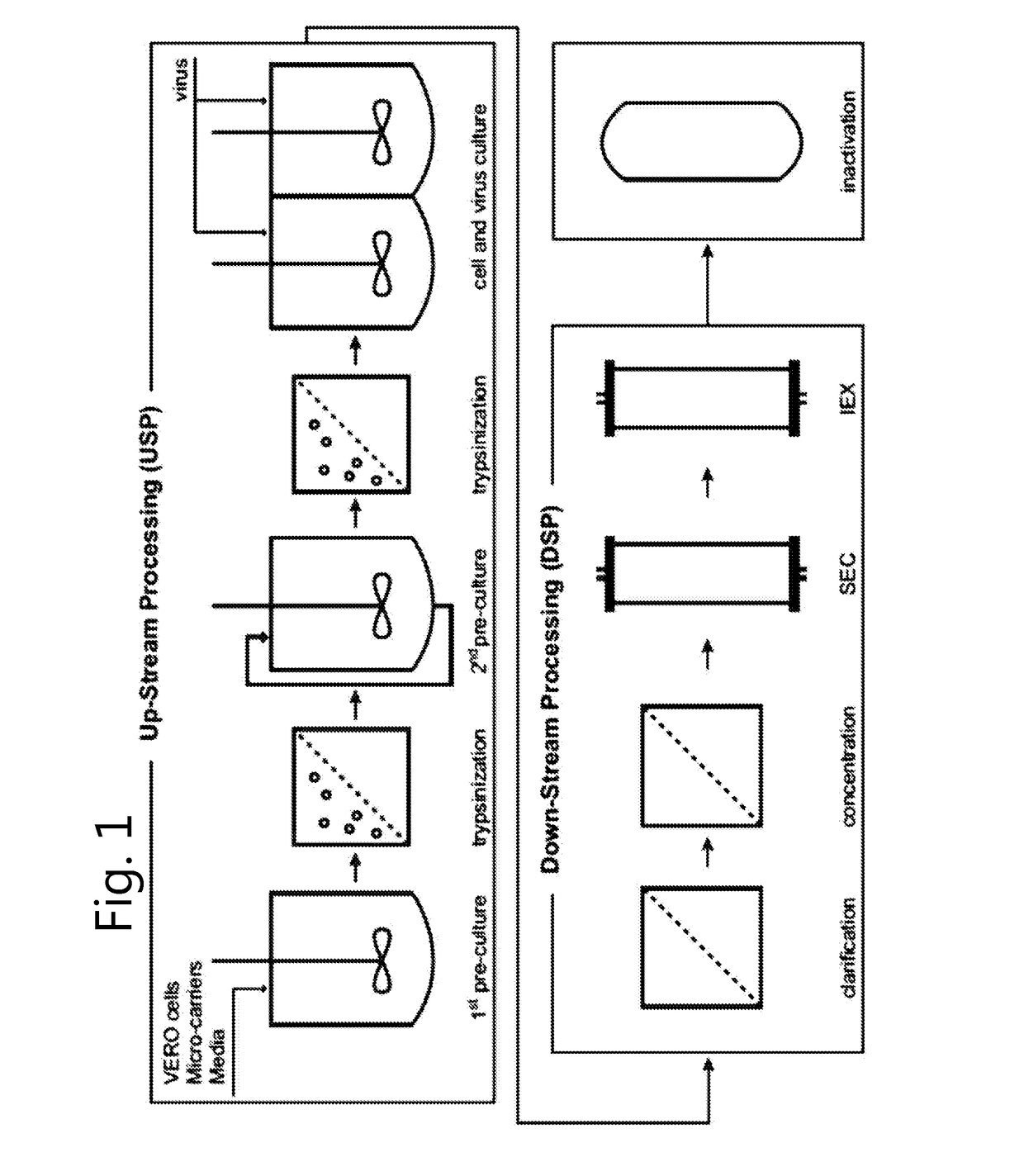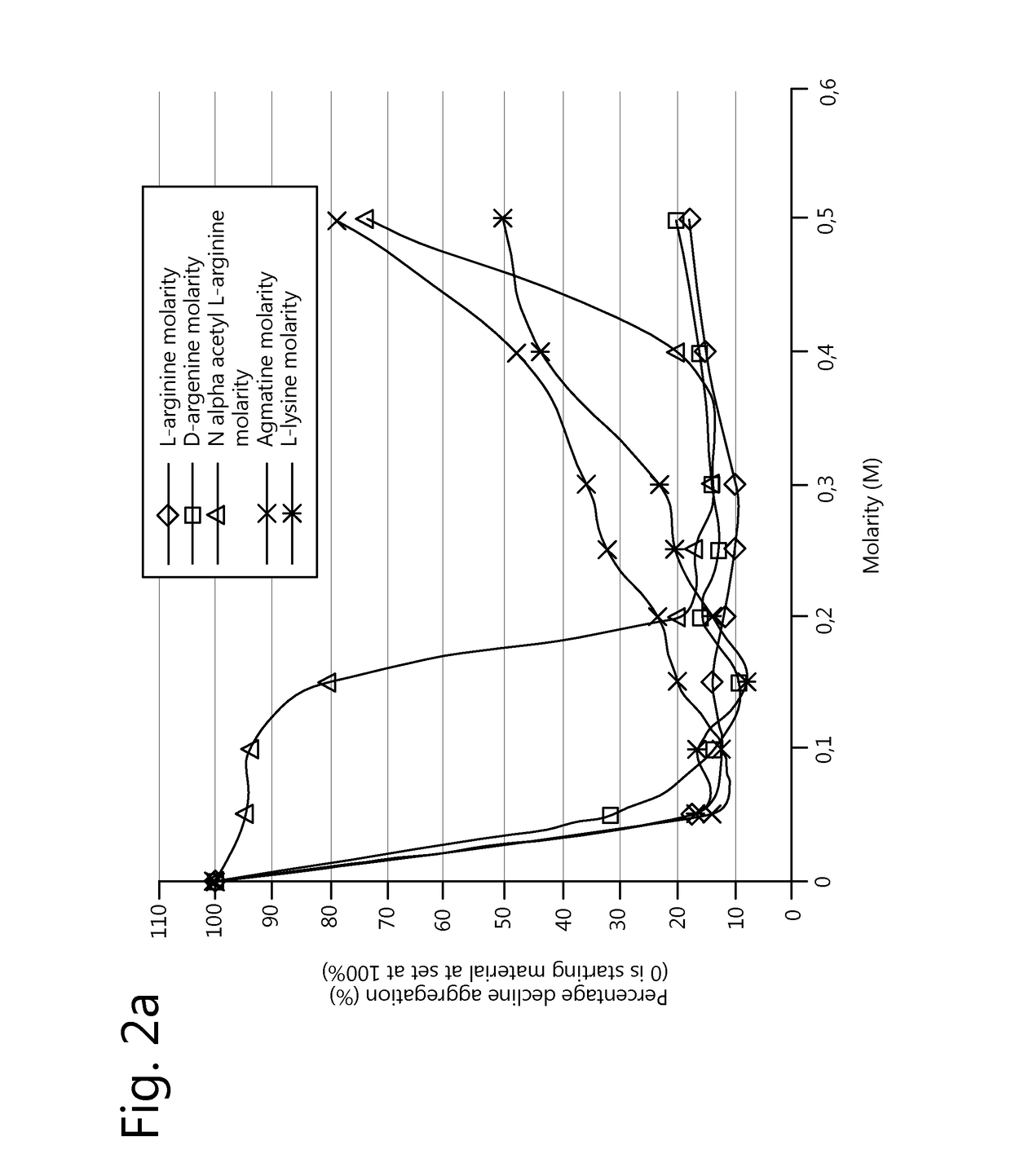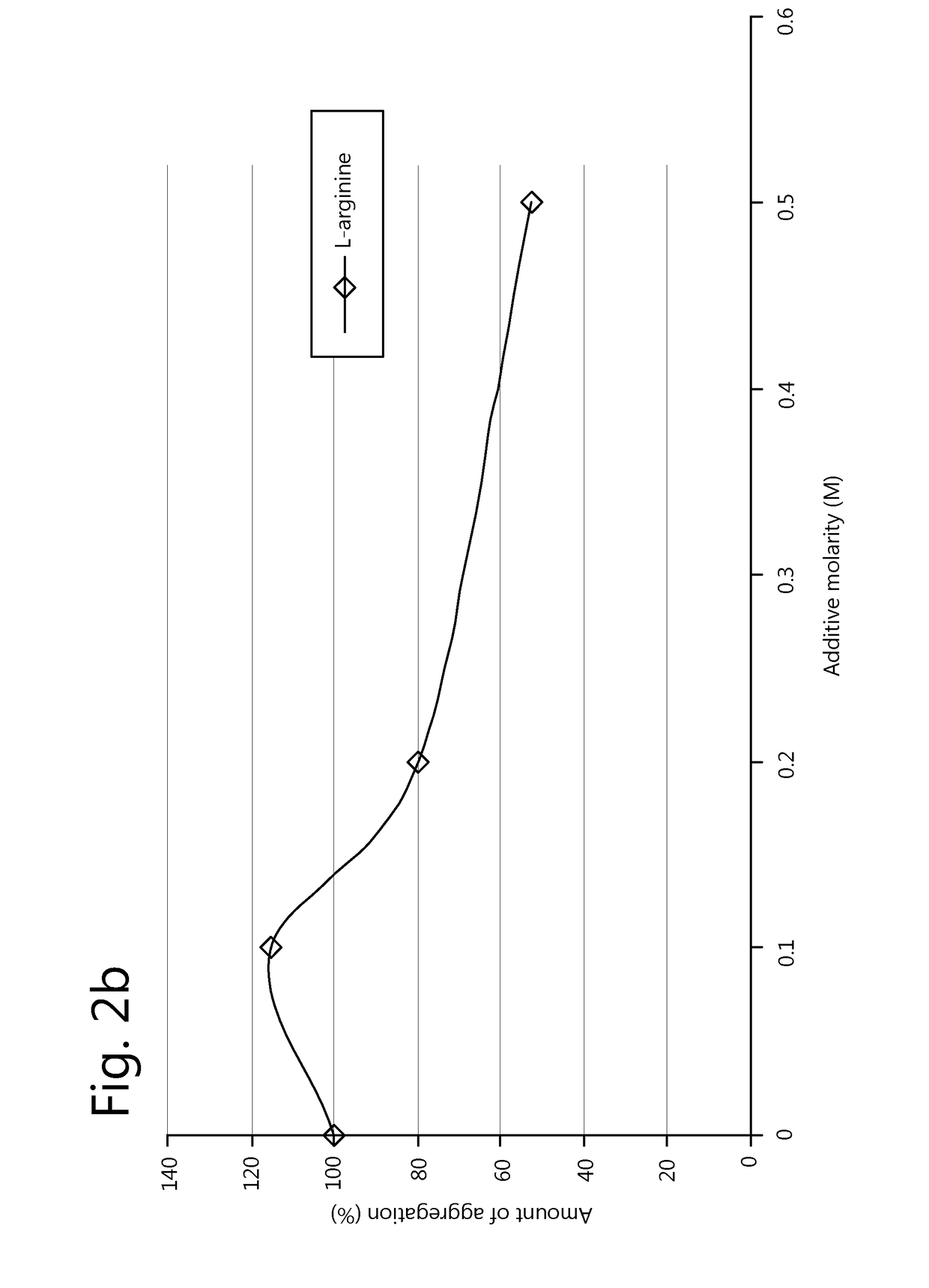Methods for the prevention of aggregation of viral components
a technology of viral components and aggregation, applied in the field of methods for preventing and/or can solve the problems of reducing shelf life, adverse effects upon administration, and high production/manufacturing losses, and achieve the effect of preventing or reducing aggregation of viral components
- Summary
- Abstract
- Description
- Claims
- Application Information
AI Technical Summary
Benefits of technology
Problems solved by technology
Method used
Image
Examples
example 1
Virus Production
[0144]Cell culture at lab-scale. Use of different systems. Production of inactivated attenuated poliovirus strains at lab-scale.
[0145]The process starts with the cultivation of Vero Cells. The VERO cell line originates from African green monkey kidney cells (MKC) (ATCC CCL-81). Cultures are started with an ampoule from a well characterized frozen cell bank. To acquire the proper amount of cells to inoculate a bioreactor, a seed train with monolayer cultures in TC-flasks is started with M199 medium containing 5% Foetal bovine serum. M199 medium is as described in Morgan J. F. et al (1955) or Morgan J. F. et al (1950). It comprises mM amounts of basic amino acids: L-Arginine 0.33 mM, L-Histidine 0.1 mM, L-Lysine 0.38 mM (http: / / www.invitrogen.com / site / us / en / home / support / Product-Technical-Resources / media_formulation.86.html).
[0146]The seed train is continued with sub cultivations in four T-flasks, three Hyper flasks and three Cell factories. The Cell factories have a to...
example 2
Reduction of Aggregate Level
[0167]Reduction of virus aggregation can be achieved by addition of a (concentrated) solution of a basic amino acid or derivative. Any skilled person can fine-tune this method to their specific need. See FIGS. 2A and 2B.
[0168]In a further experiment, stock solutions of basic amino acids were prepared and added to batches containing different viruses in an aggregated form. Solutions were added in a 1:1 ratio. Aggregation was measured as the absorbance at 590 nm (Biowave DNA, WPA). Aggregated virus as measured prior to the addition of basic amino acids was set at 100%. The effects of different concentrations of amino acid addition on the percentage of aggregated virus are shown in FIGS. 2C, 2D and 2E for the effects of three different basic amino acids L-Arginine, L-Lysine and L-Histidine respectively) on three different influenza strains (Influenza A / Uruguay H3N2 (NIBSC), Influenza B / Florida / 4 / 2006 (NIBSC) and Influenza A / PR / 8 / 34 (NIBSC)). In FIGS. 2F, 2G ...
example 3
Offline Additions (Dissolving Existing Aggregation)
[0169]Aggregated virus was produced according to the slightly modified Salk-IPV production protocol with a 20 mM phosphate buffer (Sabin batches types 1, 2 and 3; intermediate product fractions after SEC and IEX). The obtained virus fractions were frozen in −80° C. until use. The freezing positively facilitated and / or enhanced the aggregation effect.
[0170]Influenza (with aggregates) was produced using a laboratory egg based process consisting of inoculating embryonated eggs (strain: A / Uruguay / H3N2 (NIBSC)), incubating, cooling and subsequent harvesting by disk-stack centrifugation followed by depth filtration (GE Healthcare). Virus was purified by sucrose density centrifugation, followed by a β-propiolactone inactivation with filtration. Finally a diafiltration / concentration was performed.
[0171]pH is measured using a calibrated pH meter (Orion scientific), with a gel-electrode (Mettler Toledo) and corrected using either sulfuric aci...
PUM
 Login to View More
Login to View More Abstract
Description
Claims
Application Information
 Login to View More
Login to View More - R&D
- Intellectual Property
- Life Sciences
- Materials
- Tech Scout
- Unparalleled Data Quality
- Higher Quality Content
- 60% Fewer Hallucinations
Browse by: Latest US Patents, China's latest patents, Technical Efficacy Thesaurus, Application Domain, Technology Topic, Popular Technical Reports.
© 2025 PatSnap. All rights reserved.Legal|Privacy policy|Modern Slavery Act Transparency Statement|Sitemap|About US| Contact US: help@patsnap.com



